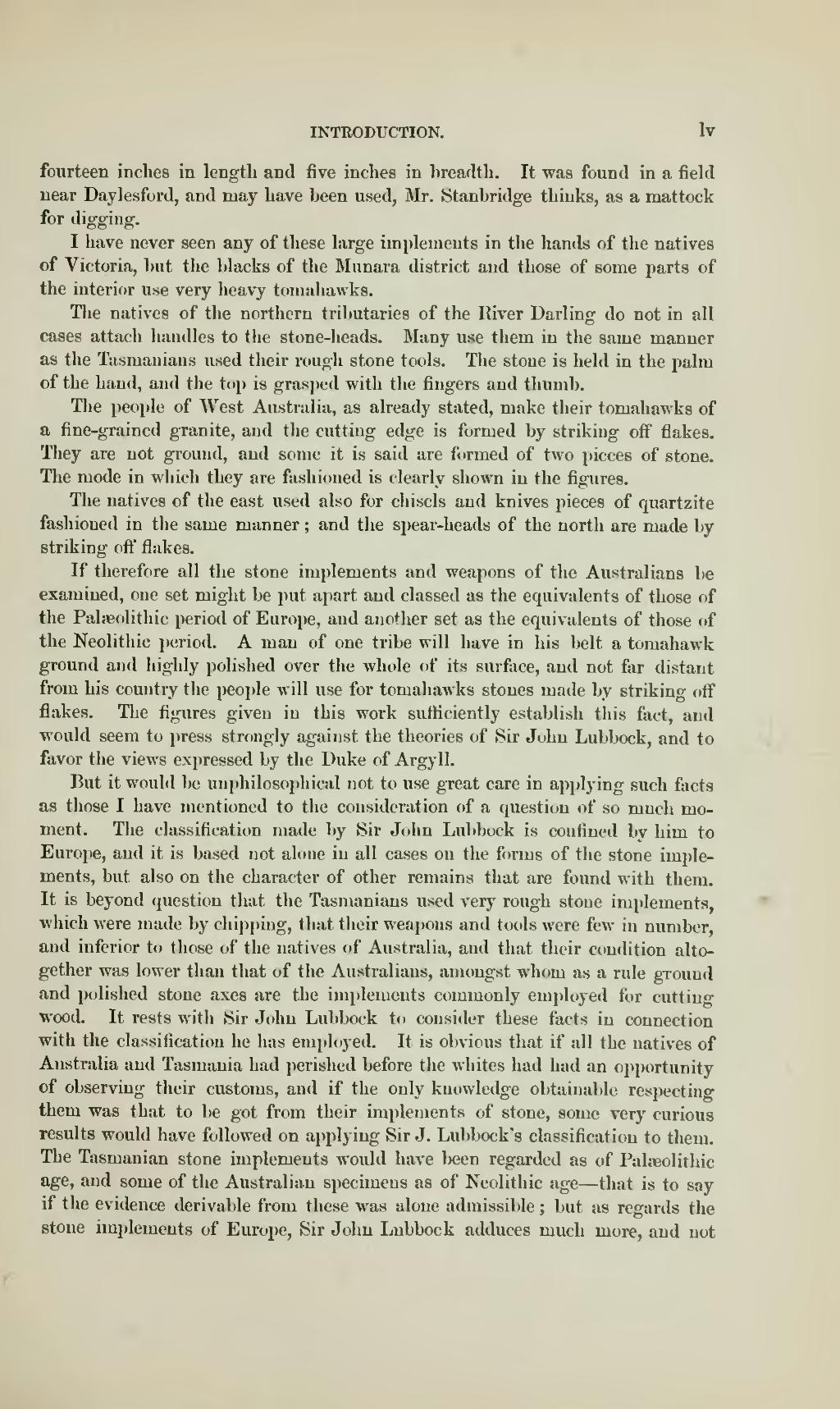fourteen inches in length and five inches in breadth. It was found in a field near Daylesford, and may have been used, Mr. Stanbridge thinks, as a mattock for digging.
I have never seen any of these large implements in the hands of the natives of Victoria, but the blacks of the Munara district and those of some parts of the interior use very heavy tomahawks.
The natives of the northern tributaries of the River Darling do not in all cases attach handles to the stone-heads. Many use them in the same manner as the Tasmanians used their rough stone tools. The stone is held in the palm of the hand, and the top is grasped with the fingers and thumb.
The people of West Australia, as already stated, make their tomahawks of a fine-grained granite, and the cutting edge is formed by striking off flakes. They are not ground, and some it is said are formed of two pieces of stone. The mode in which they are fashioned is clearly shown in the figures.
The natives of the east used also for chisels and knives pieces of quartzite fashioned in the same manner; and the spear-heads of the north are made by striking off flakes.
If therefore all the stone implements and weapons of the Australians be examined, one set might be put apart and classed as the equivalents of those of the Palæolithic period of Europe, and another set as the equivalents of those of the Neolithic period. A man of one tribe will have in his belt a tomahawk ground and highly polished over the whole of its surface, and not far distant from his country the people will use for tomahawks stones made by striking off flakes. The figures given in this work sufficiently establish this fact, and would seem to press strongly against the theories of Sir John Lubbock, and to favor the views expressed by the Duke of Argyll.
But it would be unphilosophical not to use great care in applying such facts as those I have mentioned to the consideration of a question of so much moment. The classification made by Sir John Lubbock is confined by him to Europe, and it is based not alone in all cases on the forms of the stone implements, but also on the character of other remains that are found with them. It is beyond question that the Tasmanians used very rough stone implements, which were made by chipping, that their weapons and tools were few in number, and inferior to those of the natives of Australia, and that their condition altogether was lower than that of the Australians, amongst whom as a rule ground and polished stone axes are the implements commonly employed for cutting wood. It rests with Sir John Lubbock to consider these facts in connection with the classification he has employed. It is obvious that if all the natives of Australia and Tasmania had perished before the whites had had an opportunity of observing their customs, and if the only knowledge obtainable respecting them was that to be got from their implements of stone, some very curious results would have followed on applying Sir J. Lubbock's classification to them. The Tasmanian stone implements would have been regarded as of Palæolithic age, and some of the Australian specimens as of Neolithic age—that is to say if the evidence derivable from these was alone admissible; but as regards the stone implements of Europe, Sir John Lubbock adduces much more, and not
